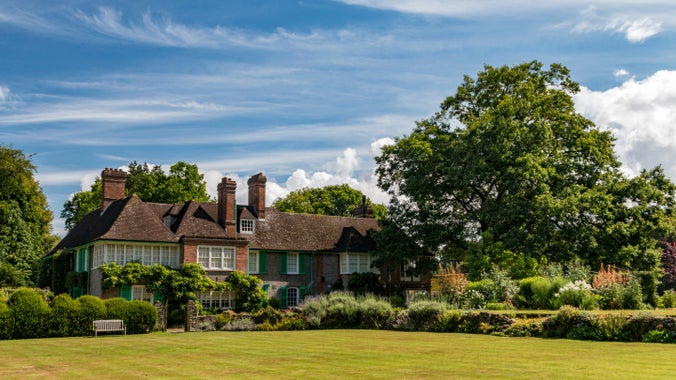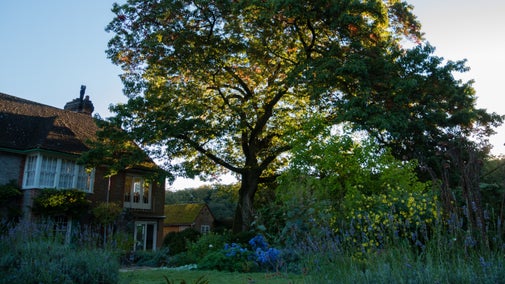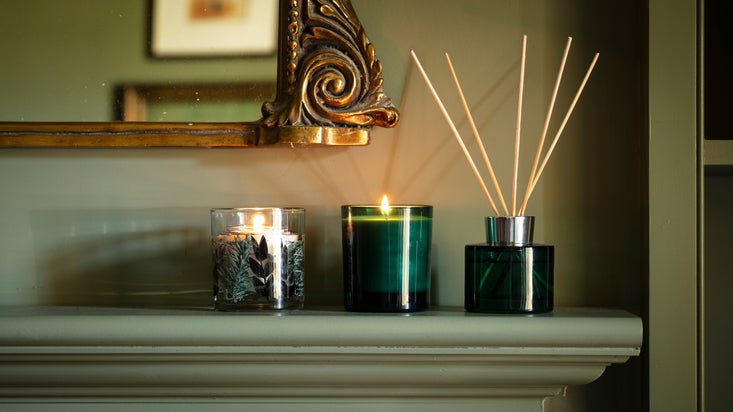
Book for a guided visit
For morning guided house experiences, we recommend that all visitors, including members, book in advance to guarantee a place. Bookings can be made up to 8am on the day.
The beloved home of one of the most prolific philanthropists of the 20th century
Huntercombe, near Henley-on-Thames, Oxfordshire, RG9 5RY
Book a visit
| Asset | Opening time |
|---|---|
| House | Closed |
| Garden | Closed |
| Shop | Closed |
| Maker Space Horsebox | Closed |
| Ticket type | With Gift Aid | Without Gift Aid |
|---|---|---|
| Adult (18+) | £15.40 | £14.00 |
| Child (5-17) under 5s free | £7.70 | £7.00 |
| Family (2 Adults and up to 3 children) | £38.50 | £35.00 |
| Family (One Adult) | £23.10 | £21.00 |
| Ticket type | With Gift Aid | Without Gift Aid |
|---|---|---|
| Adult (18+) | £14.30 | £13.00 |
| Child (5-17) under 5s free | £7.20 | £6.50 |
| Family (2 Adults and up to 3 children) | £35.80 | £32.50 |
| Family (One Adult) | £21.50 | £19.50 |
The Common Room second-hand bookshop is located on the ground floor of the house.
The car park is a short walk from the house, roughly 200 yards. Accessible parking by the house is also available.
Dogs on leads are welcome in the gardens, woodland and Common Room bookshop. Assistance dogs are welcome in the house.
Guided experiences around the house available in the mornings. Advance booking is recommended.
The Maker Space Horsebox concession serves light refreshments. There is accessible outdoor seating available with some limited seating under a marquee.
Our shop is located on the first floor of the house.
There are two unisex toilets available in the house. Baby changing facilities are available in the upstairs Shop toilet.
Blue Badge parking next to the house. Partly accessible grounds. Accessible Portaloo. Stairs to first floor of house and shop.
There is an accessible Portaloo available on the main driveway, approx. 30 metres from the house.
Available outside the main house. Access is through the black iron gate in the first turning on the right on Bradley Road. The gate is unlocked but may be closed. Please call us if you need assistance opening the gate.
Available outside the main house. Access is through the black iron gate in the first turning on the right on Bradley Road. The gate is unlocked but may be closed. Please call us if you need assistance opening the gate.
Photograph album available of the upstairs rooms. Please ask at Visitor Reception for a copy.
Inside the house, there are pink-seated chairs available for visitors to use.
Access to upper floors: Stair Climber machines on site allowing wheelchair access upstairs in the Mansion. Please call to pre-book on 01491 641224 or email stairclimberbookingnuffieldplace@nationaltrust.org.uk. Please be aware that we ask for 7 days’ notice prior to your visit.
There are two wheelchairs available to borrow - please ask at Visitor Reception on the day or call us in advance.
Huntercombe, near Henley-on-Thames, Oxfordshire, RG9 5RY
We've pulled together all of the information you need to help you make the most of your visit to Nuffield Place.

A modest yet charming mid-20th century home which tells the captivating story of Lord and Lady Nuffield. Join a guided experience in the morning or explore at your own pace in the afternoon.
Arts and Crafts style garden, with a rockery, decorative lawns and herbaceous borders, surrounded by a woodland walk featuring bluebells in the spring.
Located upstairs, the shop sells Morris Motors and MG memorabilia alongside a selection of National Trust gifts, edible treats and books.
Pop by the Common Room to peruse the second-hand books for your next riveting read or sink into a comfy chair and admire the garden views.
Concession stand overlooking the wildflower meadow, serving hot and cold drinks and a variety of cakes and scones.
Explore the house at Nuffield Place. Lord Nuffield's beloved home remains just as it was left, from the wireless to his hidden tool cupboard. Join a morning guided experience or explore at your own pace in the afternoon.

Discover what to see in the garden at Nuffield Place. Explore the winding paths of the Arts and Crafts garden at Lord Nuffield's former home.

Lady Nuffield's car, the Wolseley Eight, is the only historic car in the whole of the the National Trust's collections that still runs. It is on display in the garage at Nuffield Place.

Stop by the shop at the end of your house experience to pick up a gift or a little reminder of your visit. Visit The Maker Space Horsebox concession café for barista coffees and delicious cakes.

Sorry, there are no upcoming events at this place
Nuffield Place reveals the surprisingly down-to-earth lives of William Morris, later Lord Nuffield and founder of the Morris Motor Company, and his wife, Elizabeth. Their home and personal possessions are just as they left them, the decor and furnishings intact. From the comfortable sitting room with a small black and white TV, to Lord Nuffield's humble bedroom with a secret built-in workshop, this intimate home exudes the tastes and interests of its illustrious owner.
Discover the history of Nuffield Place's famous owner. William Morris, later Lord Nuffield, founded the famous Morris Motor Company from nothing – explore his story.


For morning guided house experiences, we recommend that all visitors, including members, book in advance to guarantee a place. Bookings can be made up to 8am on the day.
By sharing your email address you’re agreeing to receive marketing emails from the National Trust and confirm you’re 18 years old or over. Please see our for more information on how we look after your personal data.